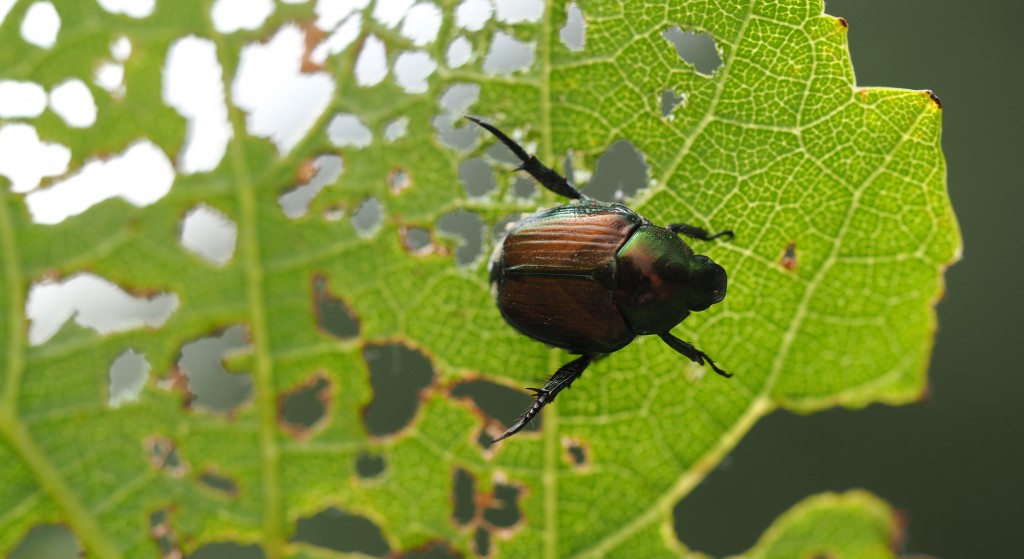The Japanese beetle is showing up in Georgia vineyards, according to the University of Georgia (UGA) Extension Viticulture Blog. In large enough numbers, Japanese beetles can be a severe pest of grapes during the summer, feeding mainly on foliage and rarely on the berries.

New plantings are most susceptible. Older, established vines can withstand some feeding damage, but young vines can quickly become defoliated from these beetles.
Japanese beetles are most active on warm, sunny days and tend to congregate in groups on vines to feed and mate near the top of the canopy. The adult beetles feed on the soft leaf tissue between veins, which can lead to a skeletonized appearance. There are no official thresholds for Japanese beetle leaf damage, but management is often warranted when feeding damage results in about 15% of the leaves being damaged. Growers should rely on their judgment and experience to determine whether beetle abundance and/or injury warrants chemical control.
Abundance is often highest at vineyard borders, so focused management for these beetles may be an option to minimize cost.
Japanese beetles also appear to show preference for grape varieties with smooth, thin leaves which are unfortunately characteristic of many wine grape varieties (e.g., Chardonnay, Traminette, and Vidal Blanc). Focus for monitoring and management should be given to young vineyards and areas with a history of Japanese beetle injury.
Note: Standard monitoring traps for Japanese beetles are highly efficient at attracting beetles to your vineyard but are inefficient at trapping them. These traps are NOT recommended.
Management recommendations can be found at smallfruits.org:
Bunch grapes: https://smallfruits.org/files/2021/02/2021-Bunch-Grape-Spray-Guide.pdf
Muscadine: https://smallfruits.org/files/2022/03/2022-Muscadine-Guide.pdf
Source: UGA Extension Viticulture Blog










